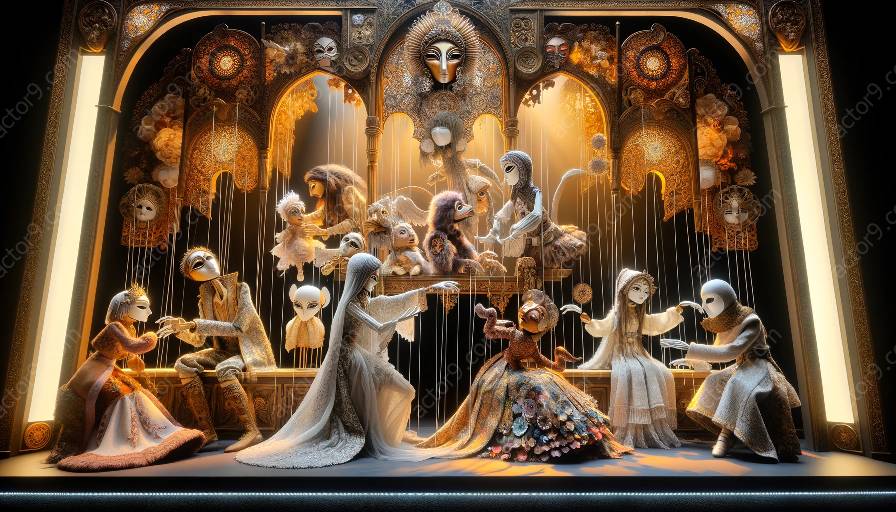Improvization is an essential aspect of theatre, and it is especially relevant in the realms of puppetry and mask performances. In this topic cluster, we will explore the unique ways in which improvisation can be utilized to create meaningful connections between puppetry and mask performers and their audience, and how it is compatible with improvisation in theatre.
Improvisation in Theatre
Before diving into the specific practices of improvisation in puppetry and mask work, it is crucial to understand the broader context of improvisation in theatre. Improvisation is the process of creating and performing spontaneously without preparation. It involves thinking on one's feet, being present and responsive in the moment, and embracing the unexpected.
Embracing Spontaneity in Puppetry and Mask Performances
Puppetry and mask work offer unique opportunities for improvisation. Performers often need to navigate unforeseen technical challenges and unexpected audience interactions without breaking character. By embracing spontaneity, puppeteers and mask performers can create engaging and immersive experiences for their audience.
Engaging the Audience
One of the primary goals of improvisation in puppetry and mask performances is to create meaningful connections with the audience. Through improvisational techniques, performers can establish a level of authenticity and spontaneity that resonates with the audience, fostering a deeper sense of connection and engagement.
Enhancing the Theatrical Experience
Improvisation in puppetry and mask work goes beyond spontaneity; it is a powerful tool for enhancing the overall theatrical experience. It allows performers to adapt to the energy of the audience, inject humor or emotion as needed, and create moments of genuine interaction and connection.
Creating Authentic Interactions
Both puppetry and mask work thrive on the ability to create authentic interactions between the performers and the audience. Through improvisation, performers can tap into the essence of their characters and respond to the audience's reactions in a way that feels real and unscripted, blurring the lines between fiction and reality.
Building Trust and Collaboration
Improvisation fosters a sense of trust and collaboration among puppeteers and mask performers. It allows them to co-create moments and narratives in real time, relying on each other's cues and responses to shape the performance. This collaborative dynamic extends to the audience, inviting them into the collective creation of the theatrical experience.
Connecting with Mask Work
Mask work, in particular, relies heavily on the physical and expressive capabilities of the performers. Through improvisation, mask performers can explore the full range of emotions and movements in the moment, transcending the limitations of scripted actions and embodying the raw essence of their characters.
Exploring the Multifaceted Nature of Puppetry
Similarly, puppetry offers a unique canvas for improvisation. Puppeteers can fluidly adapt the movements and expressions of their puppets to suit the evolving dynamics of a scene, injecting an element of unpredictability that captivates and resonates with the audience.
Cultivating Creative Freedom
Ultimately, improvisation in puppetry and mask work cultivates creative freedom. It empowers performers to explore uncharted territories, take risks, and push the boundaries of their craft, resulting in performances that are rich in spontaneity, authenticity, and connection.
Conclusion
Utilizing improvisation in puppetry and mask performances is a testament to the transformative power of spontaneity, authenticity, and collaboration. By embracing improvisational techniques, performers can forge meaningful connections with their audience, elevate the theatrical experience, and breathe life into their characters in ways that transcend the confines of scripted performance.




























